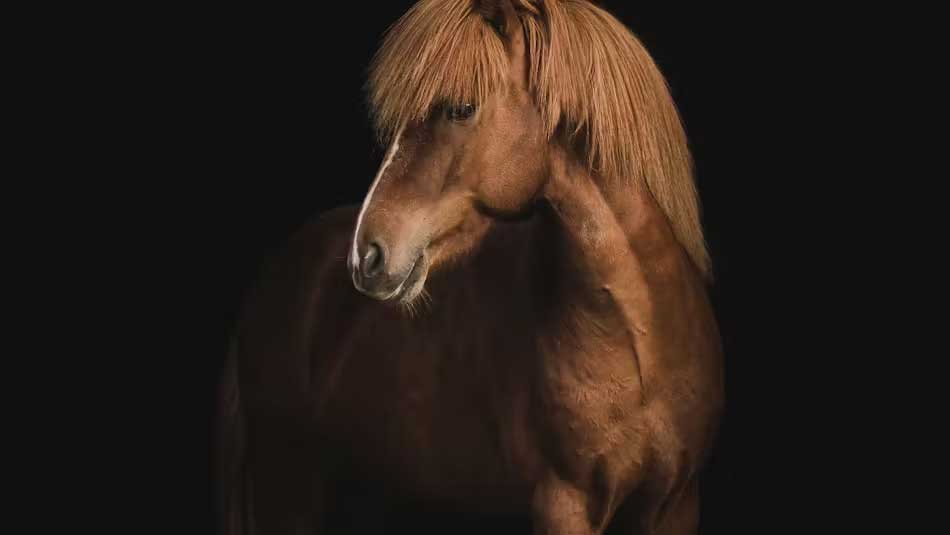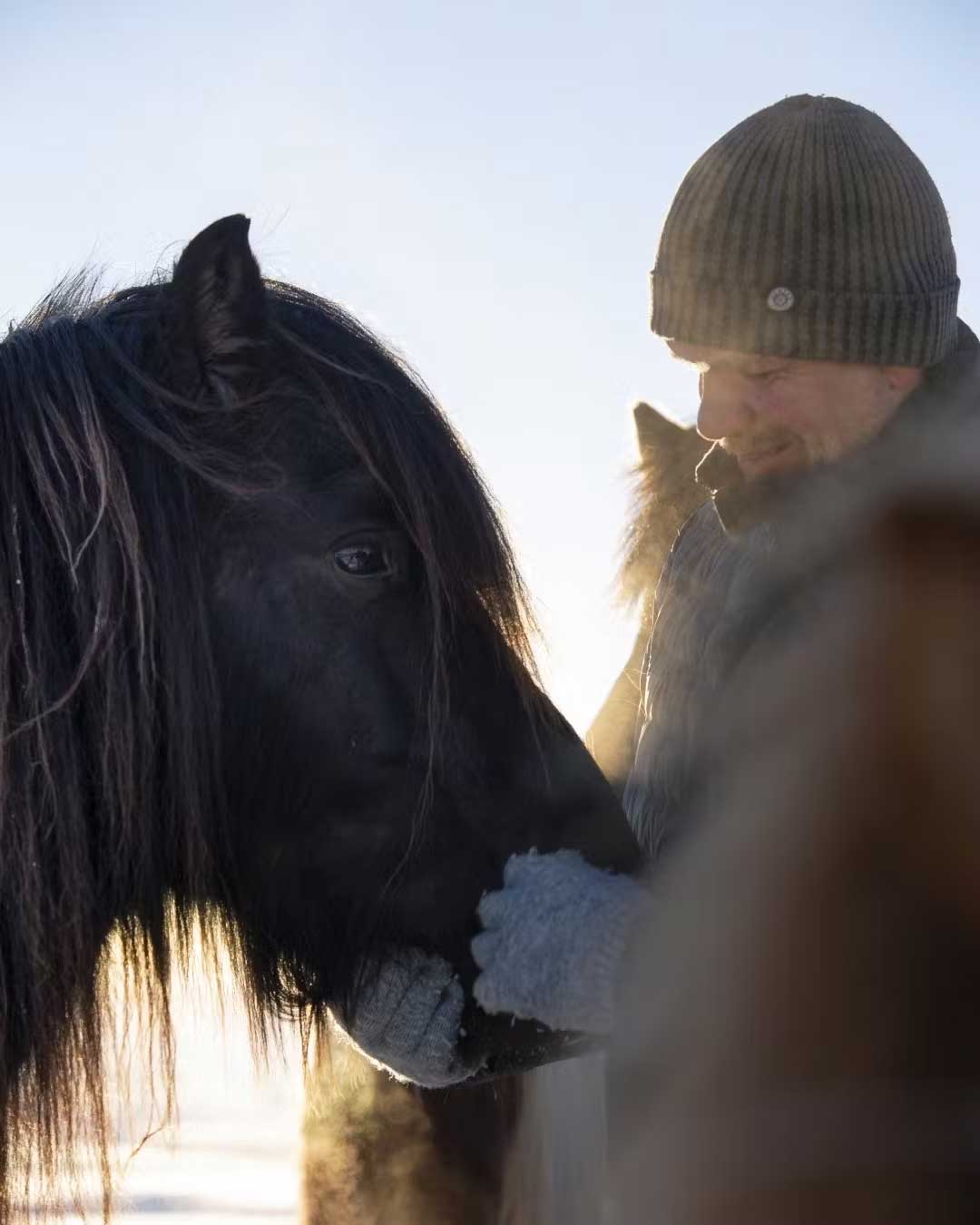
The Icelandic horse is known worldwide for its genuine and welcoming character. The horses are friendly, adventurous, smart, and quick to learn. They are usually very easy to handle, cooperative both on the ground and while ridden, yet also powerful and with a great will to work.
Icelanders traditionally favour horses with great spirit, power and stamina which is no wonder when taking into consideration what kind of long distances on hard terrain these horses needed to travel. However, the horses should always be reliable and treasured companions, ready to give their all in full speed when required, but also stand still for hours and shelter the humans from a snow storm if needed. There are many stories of how horses have saved their rider’s life, by outsmarting them, refusing to go where the path was too dangerous, or finding the way home when the rider was completely lost.

INDESPENSABLE SERVANTS
Often the same horse can be used for competitions at the highest level, as well as to safely carry the youngest family member on a ride out. The horses seem to adapt to each task given, knowing when it is time for full power or to tune down. They are an easy-going mount when a youngster or an unstable rider comes along. This versatility is highly treasured among Icelandic horse lovers, and is one of the most important breeding goals. Icelandic horses will reward mutual respect and fair handling with life-long loyalty and friendship.
The horses of Iceland have been the most indispensable servants since the island was first settled and have served that role faithfully through the ages. With no roads, vast distances and rough terrain, the horses were used for anything from carrying goods, transporting the doctor and postman, bringing people to church and to their loved ones across glacial rivers, as well as providing meat, horse hair and even milk.
Although their role has changed quite dramatically in the last 100 years, the horses remain an important part of Icelandic culture, bringing people together, both within the country as well as across borders.
This article originally appeared on The Horses of Iceland and is published here with permission.
You can find more interesting articles in our section on Health & Education.

































